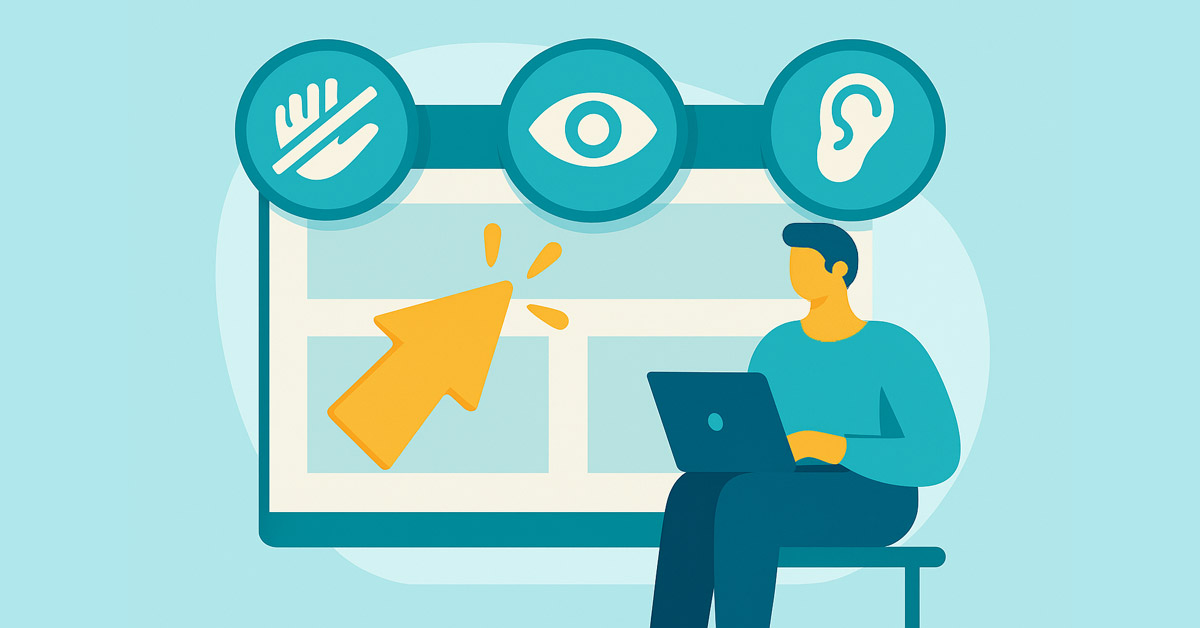Using an accessible CMS can make it a lot easier for your site to be ADA compliant. Nearly all CMS platforms have ways for you to tweak certain elements into compliance, but some naturally have more compliance built in than others. This means less headache for you or your web developer as well as a lowered chance of accessibility lawsuits aimed at you. I’ve evaluated some of the most popular content management systems for ease of compliance (how much effort is required to make the site adhere to accessibility standards). Here are the results, in order of preference.
Drupal
Although Drupal kind of an 800-pound gorilla as far as web solutions go, it’s the strongest CMS when it comes to built-in accessibility for both the front end and back end. The core team follows WCAG 2.2 AA standards, and most default themes are reviewed for compliance, all of which are overseen by their Accessibility Team. They incorporate accessibility considerations right into the development process. Drupal is also highly customizable so developers can fine-tune semantic markup, ARIA roles, and more. You can review their extensive commitment to compliance on Drupal’s Accessibility Statement page.
Of note is their community of developers and designers who are actively promoting inclusivity, reporting issues, and offering suggestions. Until recently, they even had a blind developer among their ranks, until her untimely death in 2019.
Advantages
- Front end, back end, and core themes follow WCAG 2.2 AA standards
- Highly flexible for fine-tuning compliance
- Accessibility-focused modules like Editoria11y available for content management
- Has an Accessibility Team overseeing development
- Has an active community promoting inclusivity and offering guidance
Disadvantages
- Requires technical expertise to set up and manage
- Not ideal for small businesses due to complexity
- Contributed themes may not be accessible
WordPress
Probably the most ubiquitous platform on the web, it’s immensely popular for good reason. It’s free, easy to use, and highly customizable. The WordPress core framework also follows accessibility best practices and, much like Drupal, has an Accessibility Team to review the work. According to WordPress’s Accessibility Statement, “WordPress aims to make the WordPress Admin and bundled themes fully compliant with Web Content Accessibility Guidelines (WCAG) 2.2 AA, where possible.”
The problem, however, is that there is no accessibility oversight for the thousands of plugins and themes that are available. They vary wildly, so it’s best to look for themes and plugins that say “accessible” in the description. There are also various articles available with lists of accessible themes.
Advantages
- Admin functionality and bundled themes follow WCAG 2.2 AA standards
- Highly flexible for fine-tuning compliance
- Has an Accessibility Team overseeing development
- Accessibility-focused plugins like Accessibility Helper and Accessibility Checker to help you identify problems
- Large community and resources dedicated to accessibility
Disadvantages
- Certain themes or plugins can easily break compliance and need to be chosen with great care
- Very easy to generate non-accessible content
- You’ll need to understand ADA compliance to implement fixes
Wix
In recent years Wix has made great strides from being a limited drag-and-drop site builder to offering more customizable options with accessibility features baked in. According to Wix’s Accessibility Statement, numerous accessibility features like keyboard navigation and Aria attributes are built in, making it easier for users to be compliant.
Advantages
- Built-in, always-on accessibility features
- Has an accessibility wizard to identify and fix accessibility issues
- Good choice for beginners or small businesses with limited tech skills
Disadvantages
- Not every template is fully accessible, and some widgets may break compliance
- Customization options for advanced accessibility (like ARIA landmarks or custom code fixes) are limited
Webflow
Webflow offers clean, modern code output, which can be accessible so long as the user has a good understanding of accessibility principles when setting it up. On the bright side it does have an auditing tool to catch common issues like missing alt text, empty links, and out-of-sequence heading elements. It also has a tool to simulate how the site might look to a person with low-vision conditions like color-blindness. Here is Webflow’s Accessibility Statement if you want to learn more.
Advantages
- Plenty of controls and customization options to implement accessibility fixes as needed
- Built-in tools for testing accessibility
Disadvantages
- No “Accessibility Ready” templates
- Very easy to generate non-accessible content
- You’ll need to understand ADA compliance to implement fixes
Squarespace
Squarespace is popular because it’s got a lot of great-looking templates, allowing non-technical users to build professional websites on their own. The problem with these great-looking templates is they’re not really ADA compliant. Some may be better than others, but they’re not really designed with that in mind (at the time of this writing). Squarespace’s Accessibility Statement offers some guidance on the subject, but not much else. For these reasons, those who are concerned about accessibility will be better off with one of the other CMS platforms listed above.
Advantages
- Those who understand accessibility can implement custom code to fix some accessibility issues
Disadvantages
- No “Accessibility Ready” templates
- Some accessibility issues like missing form labels can’t be fixed with custom HTML or CSS since they are generated by Squarespace
- You’ll need to understand ADA compliance to implement fixes
Conclusions
You’re probably able to draw your own conclusions based on this information, but here are my conclusions in case you’d like a second opinion. These conclusions are solely regarding ADA compliance, and don’t necessarily mean they are superior in other aspects like ease of use or business functionality.
Best out of the box: Drupal
Best for non-technical users: Wix
Riskiest: Squarespace

